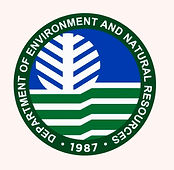
Introduction
Plastic pollution is a major global issue that affects marine and coastal environments. In 2016, 11 million metric tons of plastic waste ended up in the ocean, and this amount is expected to triple to 29 million metric tons per year by 2040 if current practices continue. The Philippines is a significant contributor to this problem, with 750 thousand metric tons of mismanaged plastic waste entering the ocean in 2010.
In response, the Philippine Alliance for Recycling and Materials Sustainability (PARMS) and its member companies have committed to the Zero Waste to Nature, Ambisyon 2030 (ZWTN 2030) initiative, which aims to divert waste from landfill and nature towards more valuable uses, such as reducing waste through reuse and recycling materials and resources. The initiative has developed a set of strategies and a roadmap with specific implementation timelines and targets to ensure that none of the industrial or post-consumer packaging waste generated by PARMS members ends up in nature by 2030.
The World Bank estimates that the Philippines loses between $790 million and $890 million in material value annually due to the disposal of single-use plastics rather than their recovery and recycling. This represents a significant opportunity for PARMS and the industry to establish a circular economy model that prevents plastic from entering nature while maximizing its value throughout its lifecycle.
References:
-
PEW Charitable Trusts and SystemIQ. 2020. Breaking the Plastic Wave: A Comprehensive Assessment of Pathways Towards Stopping Ocean Plastic Pollution. Philadelphia, Pennsylvania
-
Jambeck et al. 2015. Plastic waste inputs from land into the ocean. Science 347 (6223), 768-771
-
World Bank Group. 2021. Market Study for the Philippines : Plastics Circularity Opportunities and Barriers. East Asia and Pacific Region Marine Plastics Series;. World Bank, Washington, DC. © World Bank. https://openknowledge.worldbank.org/handle/10986/35295 License: CC BY 3.0 IGO.
These strategies provide for systemic change across the value chain -- from the converters, producers, consumers, post consumer recovery, collection, recycling, and treatments towards final diversion.

Four key elements were established as take-off point for building a robust strategy and roadmap.
-
Packaging Materials
-
Generation Quantities
-
Current and Projected Infrastructure Capacity
-
Baseline Diversion Rates
These strategies aim to drive a circular economy in the Philippines through a shift to recyclable packaging, creating finance for recovery and diversion of waste, and enabling investment in recycling and waste processing infrastructure.

It supports the Department of Economy, Planning, and Development (DEPDEV) (former National Economic and Development Authority) SDG12 agenda of Sustainable Consumption and Production, is complementary to the strategies defined in the National Plan of Action (NPOA) on Marine Litter adopted by the National Solid Waste Management Commission (NSWMC) and the Department of Environment and Natural Resources (DENR).


The ZWTN 2030 roadmap also underpins the advocacies enunciated in the "Greening the Roadmap of the Plastics Industry" initiated by the Department of Trade and Industry and the Board of Investments" for responsible use of plastics through 3R (Reduce Reuse and Recycle) and focusing on resource recovery for recycling.

